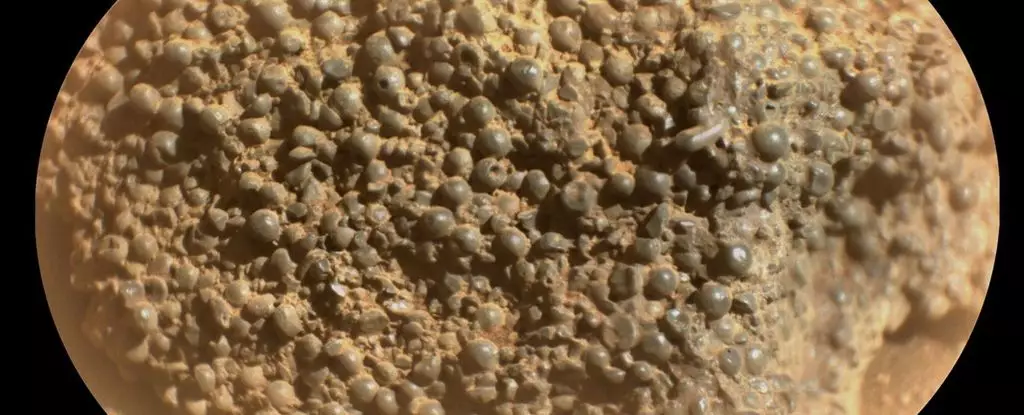In the ever-astonishing landscape of Mars, the Perseverance rover has stumbled upon yet another curiosity that has left scientists scratching their heads. Located at Broom Point on the lower slopes of Witch Hazel Hill, near Jezero Crater, the area showcases a striking rock formation dubbed St. Pauls Bay. Described as resembling a “bubbly” structure akin to frogspawn, this geological wonder is composed of hundreds of tiny, dark gray spherules, each approximately a millimeter in size. These peculiar formations challenge our understanding of Martian geology and prompt questions about the processes that created them.
Formations That Defy Comparison
St. Pauls Bay stands out like a sore thumb in its surroundings. Scientists have been left in awe, labeling the formation as “shocking” and unlike anything else found in the Jezero region. While similar crystalline structures—known as botryoidal formations—are present on Earth, they typically have well understood formation processes. In contrast, the exact origins of St. Pauls Bay remain shrouded in mystery. On Earth, botryoidal formations arise from predictable mineral growth mechanisms, yet the conditions on Mars could be entirely different, raising the tantalizing possibility of extraterrestrial geological processes at play.
Theories on Formation: Water, Fire, or Something Else?
There are multiple hypotheses regarding the formation of spherules similar to those found in St. Pauls Bay. One possibility is that they originated from molten rock cooling rapidly during a meteorite impact or volcanic activity. This process results in molten material splattering and solidifying around the point of impact, a phenomenon that could feasibly apply on the Martian surface. Previous explorations have revealed similar spherical formations on Mars, such as the hematite-rich “blueberries” or bubbly “popcorn” rocks, which suggest that the history of liquid water on Mars may play a significant role in the development of these geological features.
The Unsolved Puzzle: Float Rocks and Their Origins
An exciting yet perplexing aspect of St. Pauls Bay is that it is classified as a “float rock.” These rocks are not fixed to the bedrock beneath them; they are mobile, having been transported from their original locations through unknown processes. This movement complicates the task of scientists trying to discern the specifics of the rock’s formation. Without a clear context for St. Pauls Bay’s origins, it is challenging to ascertain whether fire, water, or another force was responsible for its creation. Nevertheless, observations from orbital missions have identified a nearby dark layer of rock that could potentially be linked to the birth of St. Pauls Bay, fueling speculation about the substantial geological activities that have shaped the Martian surface.
The Implications of Exploration
As Perseverance navigates its way closer to this geological enigma, the anticipation builds. Each new discovery on Mars is a step toward understanding the planet’s past and assessing whether it once harbored conditions suitable for life. The St. Pauls Bay rock formation adds another layer of intrigue to our quest for knowledge about Mars. Exploring these alien landscapes not only expands our scientific horizons but also underscores the beauty of curiosity-driven investigation. The opportunity to decode the secrets within these bizarre rock formations could lead to groundbreaking revelations about Mars’s geological history and, ultimately, its potential for supporting life.


Leave a Reply